|
80x5 -
240x3 -
240x4 -
320x1 -
320x2 -
320x3 -
640x1 -
640x2
Set display option above.
Click on
images to enlarge. |
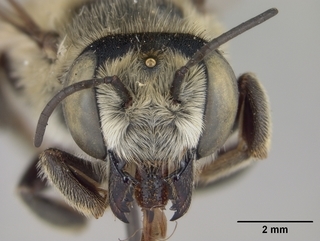
Smithsonian Institution, Entomology Department · 9
Megachile parallela, female, face |
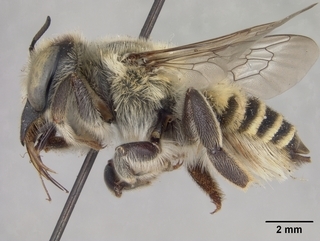
Smithsonian Institution, Entomology Department · 9
Megachile parallela, female, side |
|
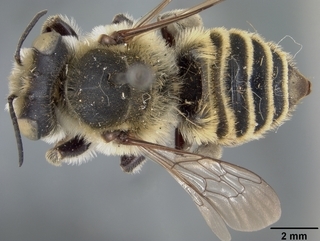
Smithsonian Institution, Entomology Department · 9
Megachile parallela, female, top |
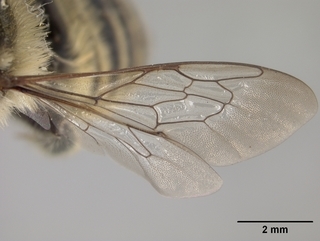
Smithsonian Institution, Entomology Department · 9
Megachile parallela, female, wing |
|
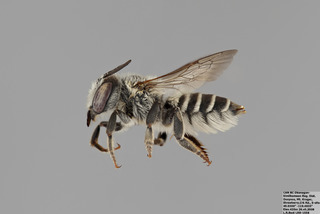
© Copyright Laurence Packer 2014
· 7
Megachile parallela FEM mm - f |
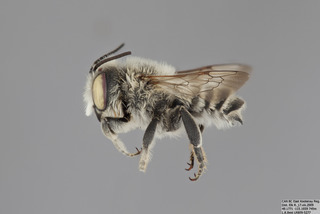
© Copyright Laurence Packer 2014
· 7
Megachile parallela MALE mm - f |
|
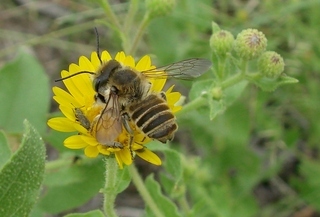
© Copyright John Ascher, 2006-2014
· 6
Megachile parallela, Parallel Leaf-cutter Bee |
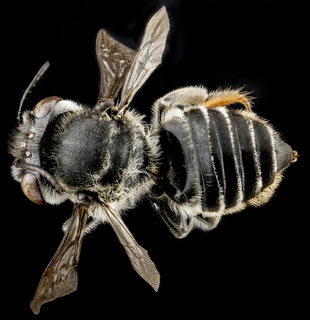
© Copyright source/photographer
· 5
Megachile parallela, F, back, Tennessee, Haywood County |
|
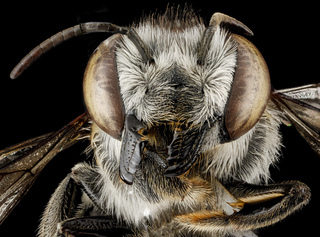
© Copyright source/photographer
· 5
Megachile parallela, F, face, Tennessee, Haywood County |
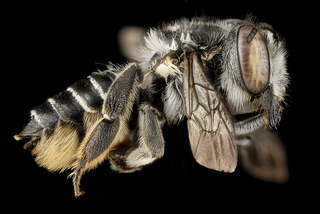
© Copyright source/photographer
· 5
Megachile parallela, F, side, Tennessee, Haywood County |
|
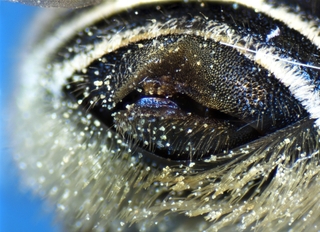
© Copyright source/photographer
· 5
Megachile parallela, f, s6 reflexed |
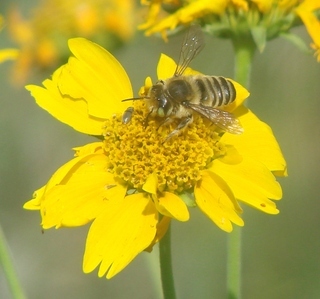
© Copyright John Ascher, 2006-2014
· 5
Megachile parallela, Parallel Leaf-cutter Bee |
|
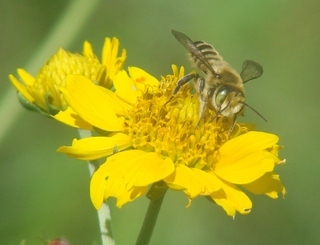
© Copyright John Ascher, 2006-2014
· 5
Megachile parallela, Parallel Leaf-cutter Bee |
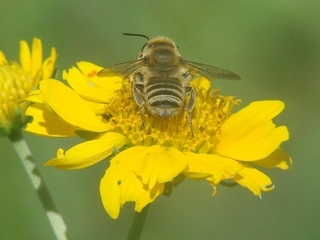
© Copyright John Ascher, 2006-2014
· 5
Megachile parallela, Parallel Leaf-cutter Bee |
|
Overview |
Identification Notes
Populations of this species from at least Texas westward look a bit different, almost always having only LIGHT hairs on S6, the bare patch on S6 indistinct or with scattered hairs, the black hairs along lateral sides of the tergites are either absent or short and indistinct
Reprinted with permission from: Mitchell, T.B. 1962 Bees of the Eastern United States. North Carolina Agricultural Experiment Station Technical Bulletin No. 152.
Megachile parallela parallela
FEMALE: Length 13-14 mm.; entirely black, including tegulae and legs, spurs pale yellow; eyes very slightly convergent below; clypeal margin straight, with a rather narrow, slightly produced, median area which is shining and impunctate, and bears a very small but distinct, median tubercle; mandibles broad apically, 4-dentate, a long, beveled edge between the 3rd and 4th teeth and a much shorter one between the 2nd and 3rd (fig. 51); lateral ocelli considerably nearer eyes than
margin of vertex; cheeks subequal to eyes width; punctures deep and distinct but quite fine and close on vertex and cheeks, face below ocelli rather finely and densely punctate beneath dense pubescence, but punctures of supraclypeal area and clypeus, deep, distinct, quite close, with shining interspaces evident; pubescence white, rather short but dense below level of anterior ocellus, becoming thin
clypeus, dense and white on cheeks, becoming somewhat elongate below, and white and quite dense on thorax laterally and posteriorly, becoming somewhat yellowish just below wing bases, and entirely pale yellow or white on scutellum; vertex, and scutum black pubescent medially and posteriorly; scutum dull, punctures very fine and quite close, almost crowded laterally, but slightly separated in median area, surface tessellate; scutellum and axillae very densely and finely punctate; pleura finely and closely punctate, somewhat more coarsely so below, becoming fine and densely crowded above; propodeum smooth but rather dull, posterior face with rather close, minute and rather vague punctures; front tarsi slender; mid basitarsus quite broad apically, the anterior, apical margin narrowly produced, segments 2 and 3 very narrow at base, dilated apically, with the anterior, apical angle slender and produced; hind basitarsus very broad, about equal to its tibia, and nearly equaling in length; tegulae somewhat shining but very minutely and closely punctate throughout; wings subhyaline, faintly clouded apically, veins brownish-piceous; abdominal terga 2 and 3 quite distinctly and narrowly grooved across base, basal margin of groove distinct but not carinate; tergum 4 faintly impressed toward base, more conspicuously so on each side, but basal margin not distinct, apical margins of terga 1-5 narrowly depressed, densely pale fasciate, very narrowly so medially on the more basal terga, tergum 1 with copious, elongate, entirely pale yellowish or whitish pubescence, discal pubescence of 2 very short and dense, black laterally, becoming somewhat more elongate and pale at center, that of 3-5 entirely black, very short, and quite dense; punctures of terga fine and very close throughout, becoming densely crowded laterally on the more basal terga, somewhat deeper and more distinct apically, tergum 6 nearly straight in profile, with only a few short, suberect hairs evident, the apical, somewhat narrowed half densely pale tomentose, surface very finely and densely punctate; steimum 6 narrowly rounded at tip, with short, black, scopal hairs that become rather sparse apically, the apex with a bare, slightly upturned lip projecting slightly beyond the dense fringe of short, dark hairs; scopa white, punctures of sterna beneath the scopa slightly separated and rather fine on the more basal plates, becoming somewhat coarser apically; no sternal fasciae evident.
MALE: Length 12-13 mm.; black, tegulae somewhat more brownish, legs entirely dark; eyes very slightly convergent below; apical margin of clypeus beneath beard with a rather narrow, slightly produced area which bears a rather pronounced, median tubercle, quite similar to the female; mandibles obscurely 4-dentate (fig. 51), inferior process very narrow, quite elongate, sub-basal; lateral ocelli very slightly nearer eyes than to margin of vertex; cheeks subequal to eyes; punctures quite deep and distinct, but very fine and quite close on vertex and on cheeks anteriorly, becoming somewhat more widely separated along posterior margin; face below ocelli very finely and closely punctate beneath the pubescence; pubescence of head and thorax largely pale, copious and dense below ocelli and on clypeus, creamy white or snowy white, often somewhat more yellowish and less dense on vertex and cheeks, becoming more elongate and white on cheeks below, rather dense and whitish on thorax laterally and posteriorly, the scutum and scutellum with shorter and somewhat thinner, erect but quite copious, yellowish or white hairs; scutum dull, very densely tessellate, punctures minute and obscure; scutellum more definitely punctate, punctures minute and densely crowded; pleura with fine, close punctures below becoming densely crowded above; lateral faces of propodeum somewhat shining, minutely punctate, posterior face with somewhat closer and more definite but very minute punctures; front coxal spines rather small, slender, acute, densely long pubescent posteriorly, and to a considerable degree obscured by pubescence on anterior face of coxae; basitarsi of all legs quite slender and simple, anterior tarsi elongate and slender, with a rather short but dense, posterior, white fringe; mid tibial spurs rather short but well developed; tegulae minutely and very closely punctate; wings subhyaline, faintly clouded apically, veins brownish-testaceous; terga 2-5 depressed across base, basal margins distinct but not definitely carinate, apical margins of terga rather deeply depressed at least laterally, more deeply and completely on the more apical terga, densely pale fasciate, discal pubescence of terga 1 and 2 copious, long and erect, entirely yellowish or whitish, very short but erect and thin on 3-5, 4 and 5 with transverse, basal, tomentose fasciae, quite broad on 5; punctures minute and densely crowded on terga 1 and 2, becoming somewhat more distinct and coarse but still close on the following terga, slightly separated only toward apical margin of 5; tergum 6 densely tomentose across base, obscuring the surface, but evidently very minutely and closely punctate, carina rounded, margins faintly crenulate, with a rather deep semicircular, median emargination, slightly impressed medially just before the emargination, median teeth of apical margin erect, conspicuous, rather narrowly carinate, tips subtruncate, much closer to the more acute, lateral teeth than to each other; tergum 7 narrowly produced medially, tip very slightly incised; sterna 1-4 exposed, shining, very finely and closely punctate except on the more apical plates, apical margins rather narrowly yellowish-hyaline, fringed with long, pale hairs forming a rather thin apical fringe; setose area of sternum 5 indefinite, sparsely covered with fine setae (fig. 52); sternum 6 with lateral, slightly separated, sparsely setose areas, the setae flexed and dilated apically, apical lobe broad, truncate, not at all angulate; gonocoxites narrowed above base, slender, slightly sinuate and not setose (figs. 50 & 55).
DISTRIBUTION British Columbia to Mexico, east to North Dakota, Indiana, North Carolina and Florida, June to September.
FLOWER RECORDS: Ceanothus, Encelia, Gaillardia, Gilia, Helianthus, Heterotheca, Hypericum, Medicago, Melilotus, Phaseolus and Verbena. Robertson (1929) records this species (as sexdentata) also on Boltonia, Cephalanthus, Cirsium, Coreopsis, Heliopsis, Lepachys, Petalostemum, Rudbeckia, Silphium and Verbesina.
The occurrence of one or more additional forms of parallela in the West makes the subspecific designation of this typical form desirable.
|
|
|
Identification |
Extracted from: Sheffield C. S., et al (2011). Leaf cutter and Mason Bees of the Genus Megachile Latreille (Hymenoptera; Megachilidae) in Canada and Alaska. Canadian Journal of Arthropod Identification No. 18
Diagnosis. The female of M. parallela is distinct, and can be recognized by apex of S6, which has a bare, slightly upturned rim projecting slightly beyond the dense fringe of short, dark hairs. The male of M. parallela is recognized by the combination of 4-dentate mandibles, unmodified front legs, two pairs of prominent teeth on the apical margin of T6 (below the carina), and the absence of red bristles on the front coxa. They are most similar to M. addenda. The male of M. addenda lacks the two pairs of prominent teeth on the apical margin of T6, and has red bristles on the front coxa.
FEMALE: Length 13-14 mm.
Head. 1) compound eyes slightly convergent below; distance from lateral ocelli to compound eyes subequal to distance to vertex, 2) clypeal margin straight, with a rather narrow, slightly produced, median area that is shiny and impunctate, with very small but distinct median tubercle, 3) mandibles 4-dentate, with long cutting edge between 3rd and 4th teeth and much shorter one between 2nd and 3rd teeth (Plate 1, Figure M1), 4) gena subequal to compound eye in width, 5) punctures deep and distinct, but quite fine and close on vertex and gena, face below ocelli finely and densely punctate beneath dense pubescence, on supraclypeal area and clypeus deep, distinct, quite close, with shining interspaces especially medially on clypeus, 6) pubescence white, rather short but dense on face below level of median ocellus, sparse on clypeus and supraclypeal area, with median sparse white patch between lateral ocellus and vertex, dense and white on gena, somewhat more elongate below, vertex with scattered short black pubescence laterally, 7) F1 longer than broad (3:2) and longer than pedicel, which is quadrate, subequal in length to remaining flagellomeres.
Mesosoma. 1) pubescence pale and quite dense laterally and posteriorly, though not obscuring the surface of mesoscutum, entirely pale on scutellum, 2) mesoscutum dull, punctures very fine and quite close, more so laterally, slightly separated medially, surface tessellate; scutellum and axilla very densely and finely punctate; pleura finely and closely punctate, somewhat more coarsely below, becoming fine and densely crowded above; propodeum smooth but dull, with minute and rather vague punctures separated by interspaces of 1-2 pd, triangle dull and impunctate, 3) front tarsus slender; mid basitarsus broad apically, anterior apical margin narrowly produced; tarsomeres 2 and 3 very narrow at base, dilated apically, with the anterior apical angle slender and produced; hind basitarsus long and broad, subequal to hind tibia, and nearly equaling it in length, spurs pale yellow, 4) tegula somewhat shining, very minutely and closely punctate throughout, 5) wings subhyaline, faintly clouded apically, veins brownish-black.
Metasoma. 1) T2 and T3 distinctly and narrowly grooved across base, basal margin of groove distinct but not carinate, T4 faintly impressed toward base, more conspicuously so laterally, basal margin not distinct; T1-T5 with apical margins narrowly depressed, densely pale fasciate; T1 with copious, elongate, entirely pale yellowish/whitish pubescence, T2 with discal pubescence very short and dense, black laterally, somewhat longer and pale at center of disc, T3-T5 with pubescence entirely black, very short, and quite dense; punctures of terga fine and very close throughout, becoming densely crowded laterally on more basal terga, somewhat deeper and more distinct apically; T6 nearly straight in profile, with few short, suberect hairs, apical half densely pale tomentose, surface very finely and densely punctate, 2) S6 narrowly rounded at tip, with short, black scopal hairs, sparse apically, the apex with bare, slightly upturned lip projecting slightly beyond the dense fringe of short, dark hairs; scopa otherwise white, punctures slightly separated and fine on more basal sterna, coarser apically.
MALE: Length 12-13 mm.
Head. 1) compound eyes slightly convergent below; lateral ocelli somewhat closer to eyes than margin of vertex (4:4.5), 2) apical margin of clypeus beneath pubescence with a rather narrow, slightly produced impunctate area that is emarginate medially with a rather small but distinct median tubercle, 3) mandibles obscurely 4-dentate, lower process very narrow, quite elongate, subbasal in position 4) gena subequal to compound eye in width, 5) punctures deep and distinct, fine and close on vertex and gena adjacent to eye margin, more widely separated along posterior margin; face below ocelli and clypeal surface very finely and closely punctate beneath the pubescence, 6) pubescence largely pale, copious and dense on face below ocelli and on clypeus, creamy to snowy white, often somewhat more yellowish and less dense on vertex and gena, becoming longer on gena below, 7) F1 slightly longer than broad (5:4), longer than pedicel, but slightly shorter than remaining flagellomeres, which are longer than broad (3:2), apical flagellomere more elongate
Mesosoma. 1) pubescence dense and pale laterally and posteriorly, though not concealing surface beneath, mesoscutum and scutellum with shorter and somewhat more sparse, erect, yellowish-white hairs, 2) mesoscutum dull, very densely tessellate, punctures minute and obscure; scutellum distinctly punctate, punctures minute, densely crowded; pleura with fine, close punctures below, densely crowded above; propodeum somewhat shining, minutely punctate with interspaces >1 pd, triangle dull, impunctate, 3) front coxal spine small, slender, acute, largely obscured by white pubescence; all basitarsi slender and simple, front tarsus elongate and slender, with short but dense, posterior, white fringe; mid tibial spur short but well developed, 4) tegula shiny, minutely and closely punctate anteriorly, punctures more sparse posteriorly, 5) wings subhyaline, faintly clouded apically, veins brownish-black.
Metasoma. 1) T2-T5 depressed basally, basal margins distinct but not definitely carinate, apical margins of terga deeply depressed at least laterally, more deeply and completely on the more apical terga, densely pale fasciate, T1 and T2 with discal pubescence entirely yellowish-white, copious, long and erect, T3-T5 with pubescence sparse, very short, erect; T4 and T5 with transverse, basal, tomentose fasciae, quite broad on T5; T1 and T2 with punctures minute, densely crowded, becoming somewhat more distinct and coarse but still close on T3-T5, slightly separated and elongate toward apical margin of T5; basal area of T6 smooth, impunctate with distinct carinate rim, area apical to this densely tomentose, obscuring the surface, very minutely and closely punctate, apical carina rounded, margins faintly crenulate, with deep semicircular median emargination, slightly impressed medially just before the emargination, median teeth of apical margin erect, conspicuous, rather narrowly carinate, tips subtruncate, much closer to the more acute, lateral teeth than to each other; T7 narrowly produced medially, tip very slightly incised, 2) S1-S4 exposed, S2-S4 shining, very finely and closely punctate basally, less so on apical terga, S2-S4 deeply grooved basally, apical margins strongly depressed, rims narrowly yellowish-hyaline, fringed with long, pale hairs forming thin apical fringe, discs of sterna with sparse pale pubescence.
Genitalia. Plate 2, Figure G1.
Discussion. Relatively common in western Canada, especially in mixed prairie regions (Hobbs and Lilly (1954). This species is a ground nester (Table 1). Gonzalez and Griswold (2007) recently revised the subgenus Argyropile.
|
|
|
Names | |
|
|
| Supported by | |
Updated: 2024-07-27 02:20:21 gmt
|